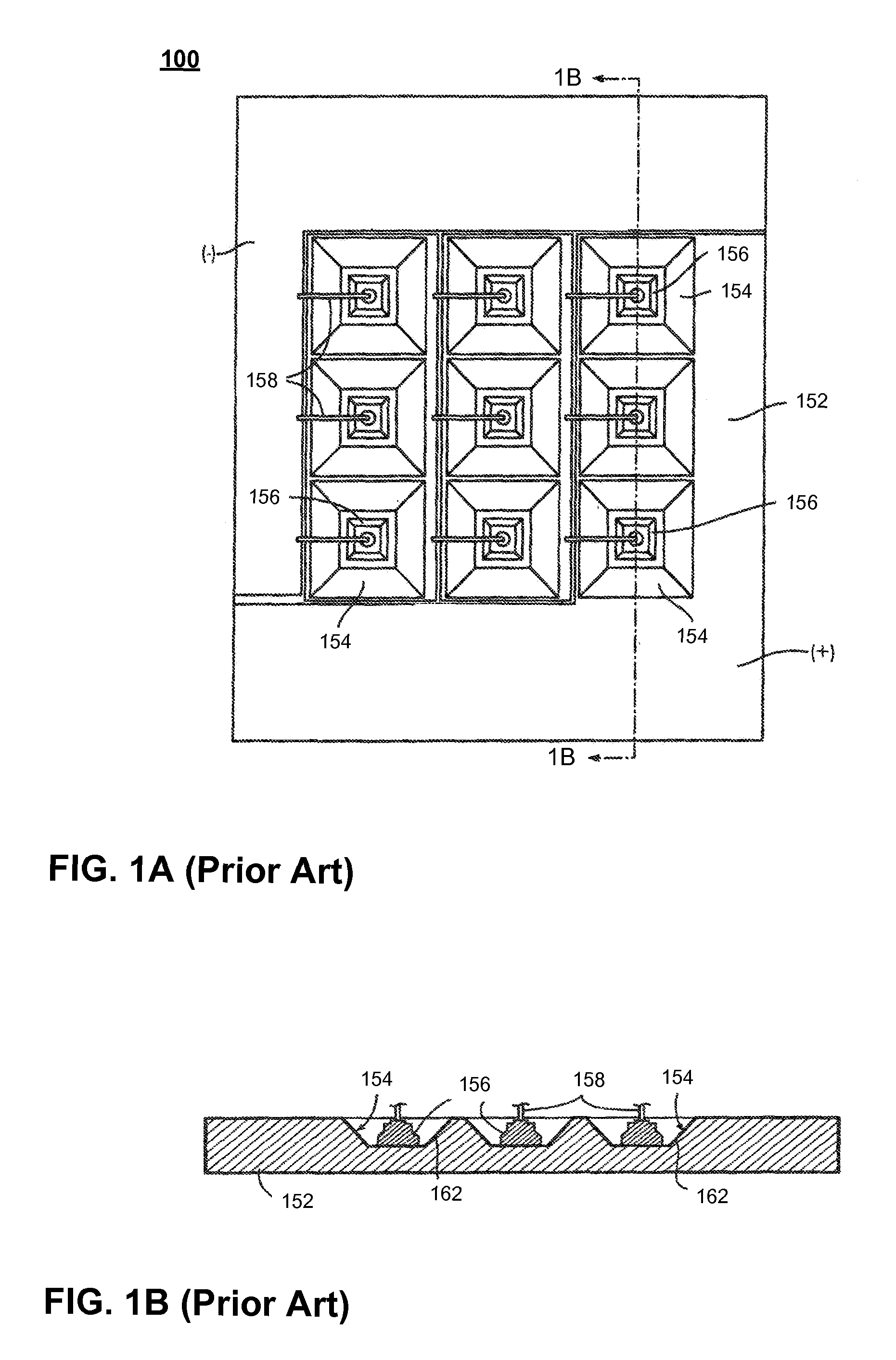Micro-channel-cooled high heat load light emitting device
a light-emitting device and microchannel cooling technology, applied in nuclear engineering, spectrometry/spectrometry/monochromator, optical radiation measurement, etc., can solve the problems of large waste heat production, led devices may suffer loss of efficiency, and uv leds remain relatively inefficient today, and achieve high fill factor and high aspect ratio , the effect of thermally efficient electrical connection
- Summary
- Abstract
- Description
- Claims
- Application Information
AI Technical Summary
Benefits of technology
Problems solved by technology
Method used
Image
Examples
Embodiment Construction
[0059]Micro-channel-cooled UV curing systems and components thereof are described that are configured for photo-chemical curing of materials and other applications requiring high fill-factor, high current density and high-brightness attributes (which ultimately leads to the attribute of high-irradiance). According to one embodiment of the present invention, LEDs of a high fill factor LED array of an ultra high irradiance UV curing system are placed substantially in electrical parallel (a / k / a massively parallel) on a common anode substrate to achieve a very thermally efficient manner of connection (e.g., with no thermally impeding dielectric layer between the base of the LEDs and the substrate as is typically required in a series configuration or a series / parallel configuration).
[0060]According to embodiments of the present invention, in order to accommodate the heat flux / thermal demands of a high fill-factor, high current density and high-brightness UV LED lamp head module, practica...
PUM
 Login to View More
Login to View More Abstract
Description
Claims
Application Information
 Login to View More
Login to View More - R&D
- Intellectual Property
- Life Sciences
- Materials
- Tech Scout
- Unparalleled Data Quality
- Higher Quality Content
- 60% Fewer Hallucinations
Browse by: Latest US Patents, China's latest patents, Technical Efficacy Thesaurus, Application Domain, Technology Topic, Popular Technical Reports.
© 2025 PatSnap. All rights reserved.Legal|Privacy policy|Modern Slavery Act Transparency Statement|Sitemap|About US| Contact US: help@patsnap.com



